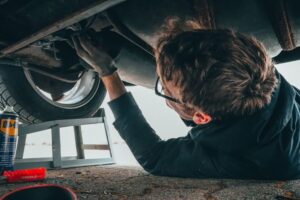One of the dashboard warning lights that you should pay attention to when it comes on is the Service Emission System light. It is not good if this light shows up on your dash. In this article, I’ll discuss Service Emission System – meaning and how to fix it.
If the service emission system light suddenly pops out of your dash, your vehicle’s emission system is malfunctioning. Your car is emitting polluted air that goes below the standards that federal laws allow.
You will fail if you turn in your car for an emission test or smog check. This warning light is not the same as the Check Engine light. It is more focused on the quality of exhaust gas your vehicle produces. The cost of fixing this problem depends on the actual cause. On average, the fix will be about $200.
Read on to learn more about the Service Emission System warning light, why it is activated, and the usual ways to fix this issue.
Service Emission System – What Does It Mean?
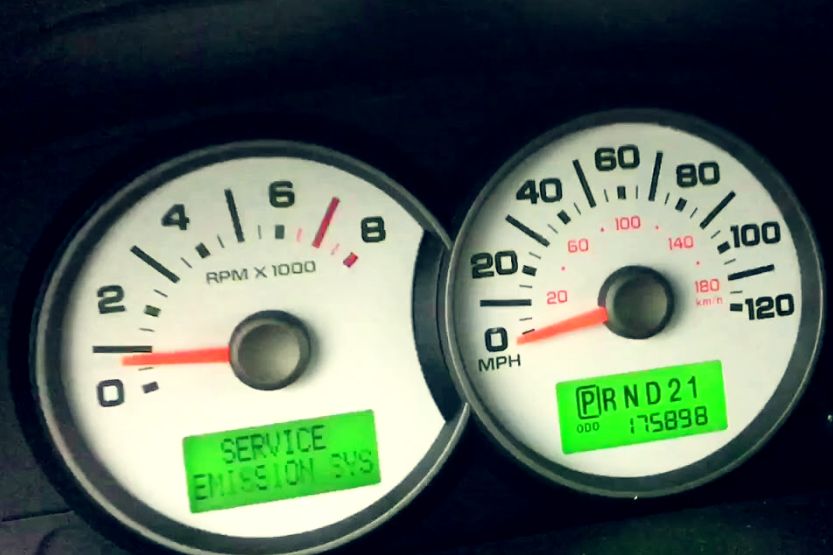
When this light pops out of your dash, your vehicle’s emission system is not working as it should. It emits polluted air below the standards set by federal laws. Your car will not pass the emission or smog check if you will turn it in for an emission inspection.
If you want your car to pass the emission test, you need to fix the cause of the problem. This issue is typically due to too much fuel in the air and fuel mixture during combustion. Too much fuel results in excess carbon gasses in the exhaust.
Fixing this issue will cost between $175 and $200, depending on the actual cause.
Can you still drive your car safely if its Emission System warning light has turned on your dash? Yes, you still can because this warning light is not directly warning you that you can’t drive your car safely.
However, officers will apprehend you if caught driving a car spewing dangerous gases since you’re violating emission laws. So, once you see this light flashing on your dash, fix the issue as soon as possible.
Should You Be Concerned About Your Car’s Emission System?
Most modern vehicles have emission systems to ensure they won’t pollute the environment. These systems are designed to measure the particles that the car’s exhaust system emits.
If your car uses an internal combustion engine (which most cars do), it burns fuel and air inside its combustion chambers to make the engine run. Unfortunately, not all fuel and air mixture is entirely burned during combustion.
The unburned gases are diverted to the exhaust system and out of your vehicle through the exhaust pipe. These are the gases that your car’s emission system is measuring to determine if they conform to the safety standards of the federal government.
The unburned gases should be minimum and can’t adversely affect humans and the environment. As the world has become more aware of the damage pollution has done to the planet, governments have become stricter in implementing laws protecting the environment.
Considering that automobiles play a significant part in the pollution of our planet, you will understand why today some laws were crafted and implemented globally. So, if you see the Service Emission System light turning up on your dash, you should be alarmed and perform the necessary fix.
Is Servicing Your Car’s Emission System Necessary?

The emission system is critically important in the operation of your car. It must always be included in the routine maintenance of all modern vehicles. This system must always be clean and free from dangerous substances to us and the environment.
To ensure that your car does not emit toxic substances to people and the atmosphere, its emission system should always be in good shape. Only if it is working 100% will it be able to fulfill its functions.
So, don’t take it for granted when you see the Service Emission System warning light on your dash. Yes, you can still drive your car safely, but doing so is toxic to you and others, not to mention your surroundings.
Aside from this, if you schedule regular servicing of your emission system, your vehicle’s performance and fuel efficiency will also improve.
Again, what does it mean when it says service emission system? An activated service emission system light means you have a faulty emissions control system. This means your car may fail an emission or smog check.
How Do You Fix Emission Issues?
Car mechanics take several steps when they service a vehicle’s emission system. Here are the usual steps:
1. Check Air Filter and Cleaner
Inspect the air filter and air cleaner and see if they are already dirty and clogged. The emission system uses a unique paper filter that prevents dust, dirt, and foreign particles from entering the system.
Replace the filter after one year of use or if it is already clogged. Clean the air filter housing of accumulated dust and debris.
2. Check the Positive Crankcase Ventilation System
This part of the emission system redirects the vapors from the blow by gases going into the intake manifold. This action decreases sludge formation and air pollution inside the engine. Check if there are clogs and deformed or missing hoses and perform the necessary fix.
3. Inspect the EVAP System
The Evaporated Emission Control system prevents poisonous vapors in the fuel system from being emitted into the atmosphere. Generally, this system does not require too much maintenance.
However, inspecting its canister, fittings, and hoses for possible damages would be best. If the canister filter is already black and clogged with unburned gases, you should replace it.
4. Check the EGR System
You should also inspect the Exhaust Gas Recirculation system. This emission system component reduces NOx (nitrous oxide) emissions produced during the combustion process when extremely high temperature is present.
It allows exhaust gases into the intake system to decrease the combustion temperature. You should also check for any restrictions in the pipes and passages, damage in the vacuum hoses, and the valve’s operation.
5. Inspect the Air Injection System
You should also check if your car is equipped with an Air Injection System. The AIS system pumps air into the catalytic converter or exhaust ports to facilitate the burning of unburned or partially burnt fuel.
This action reduces HC (hydrocarbons) and CO (carbon monoxide), both harmful to people and the environment. You should also check for damages in its hoses, belt, check valves, and lines.
If your emission system uses a pump inlet filter, you should inspect and replace it if it is already broken.
6. Check the Cat Converter and its Connections
The catalytic converter does not require too much maintenance. However, its connecting pipes, including the exhaust pipe, must be checked for possible leaks. If your cat converter is more than five years old, ensure it is not clogged and is still in good condition.
If not, it should be replaced. A blocked and very old cat converter can cause overheating of the engine and loss of engine power.
What Causes of Emission System Problems?
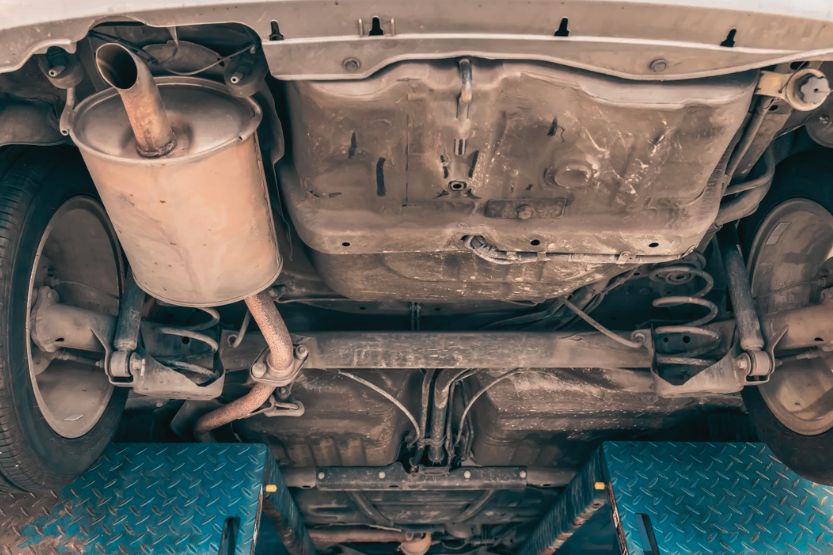
There are several reasons why your emission system can fail. You should be aware of these reasons so that when you take your vehicle to an emission test, you are sure it will pass.
1. Combustion Issues
Your engine will perform well with the proper fuel and air mixture. Efficient combustion is only possible if its air-to-fuel ratio is correct. Your car will not pass the emission test if it has too much fuel or air.
2. Clogged Exhaust System
Leaks, clogs, and malfunctioning mass air flow (MAF) sensors are the most common issues of problematic exhaust systems. An added problem with a failing exhaust system is reduced engine performance. Your engine can overheat if there are leaks in the system.
3. Problems With Ignition
When the proper air-to-fuel ratio is inside the engine’s pistons, it will be compressed by the cylinders. As the pistons reach the top dead center of the cylinder, the spark plugs will produce the sparks that will detonate the compressed fuel and air.
However, if your spark plugs are worn out or very old, they may not spark at the right time. This will result in the incomplete combustion of the air and fuel.
The result is: there will be a lot of unburned gases, which produce black and toxic smoke. This is the smoke you see from a vehicle’s exhaust pipe.
4. Failing Catalytic Converter
A malfunctioning cat converter can also produce black smoke from your exhaust system. You can tell if your cat converter is going bad if your exhaust pipe smells of rotten eggs.
The work of a cat converter is to turn toxic carbon monoxide (produced in your exhaust system) into carbon dioxide that is safe for the environment.
So, if the cat converter cannot fulfill this function, you will have emission problems and most likely fail your emission test.
5. Activated Check Engine Light
You don’t know, but if your check engine light comes on, you may also fail your emission test. How can this happen? You need to understand that to pass the emission test, your check engine warning light should not appear on your dash.
If this light shows up on the screen because of a failing computer control module, you won’t pass the emission test, even if there’s nothing wrong with your emission system. That’s just how they have set up this test.
In Closing
When you see the Service Emission System warning light on your dash, it indicates your car’s emission system is not working. This means your vehicle is emitting polluted air, below federal laws standards.
If you go for an emission test or smog, check if your vehicle will fail. You should not confuse this warning light with the Check Engine light. They mean different things. The Service Emission System light is focused more on the exhaust gas quality that your car emits.

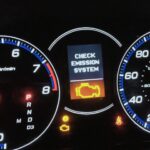
![Service Stability System [Causes and How to Fix this Warning Light] service stability system](https://roadsumo.com/wp-content/uploads/2022/04/service-stability-system-150x150.jpg)
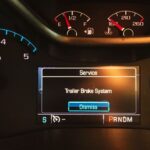

![Magnaflow Vs Flowmaster Exhaust System [Which Is Better?] magnaflow vs flowmaster](https://roadsumo.com/wp-content/uploads/2021/05/magnaflow-vs-flowmaster-150x150.jpg)
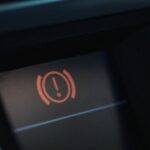
![Read more about the article Rod Bearing [What is It, How to Replace It, and Replacement Cost]](https://roadsumo.com/wp-content/uploads/2021/05/rod-bearing-300x200.jpeg)

